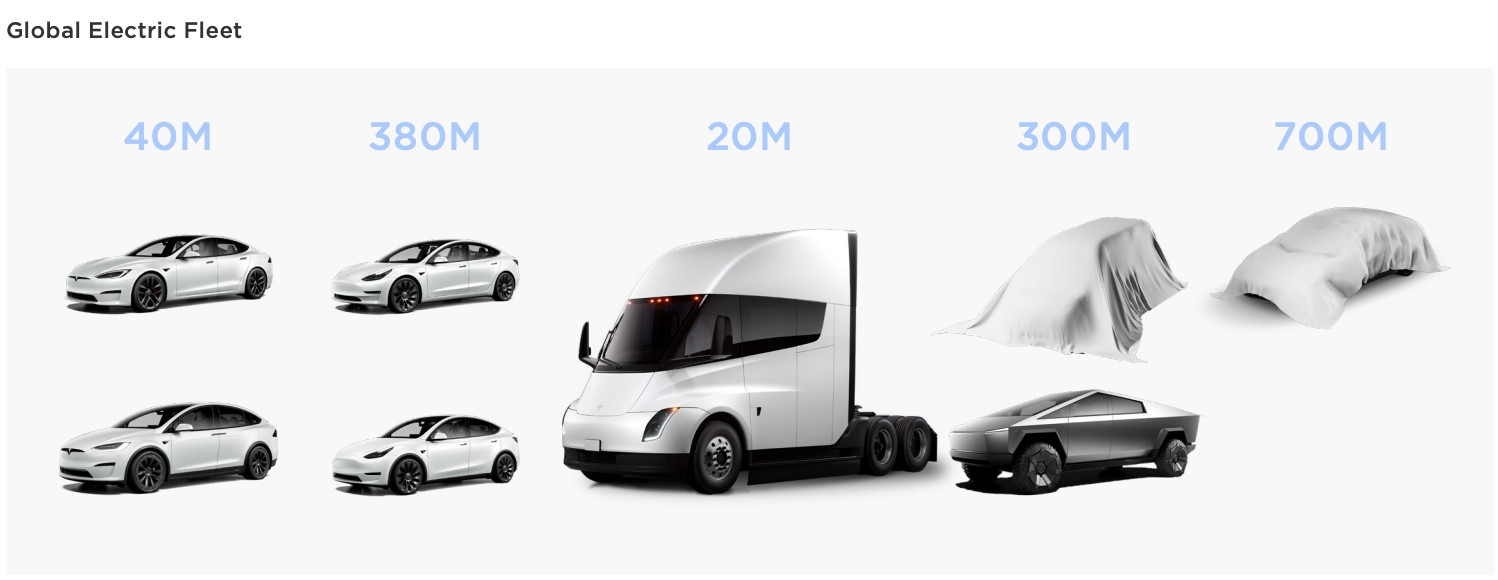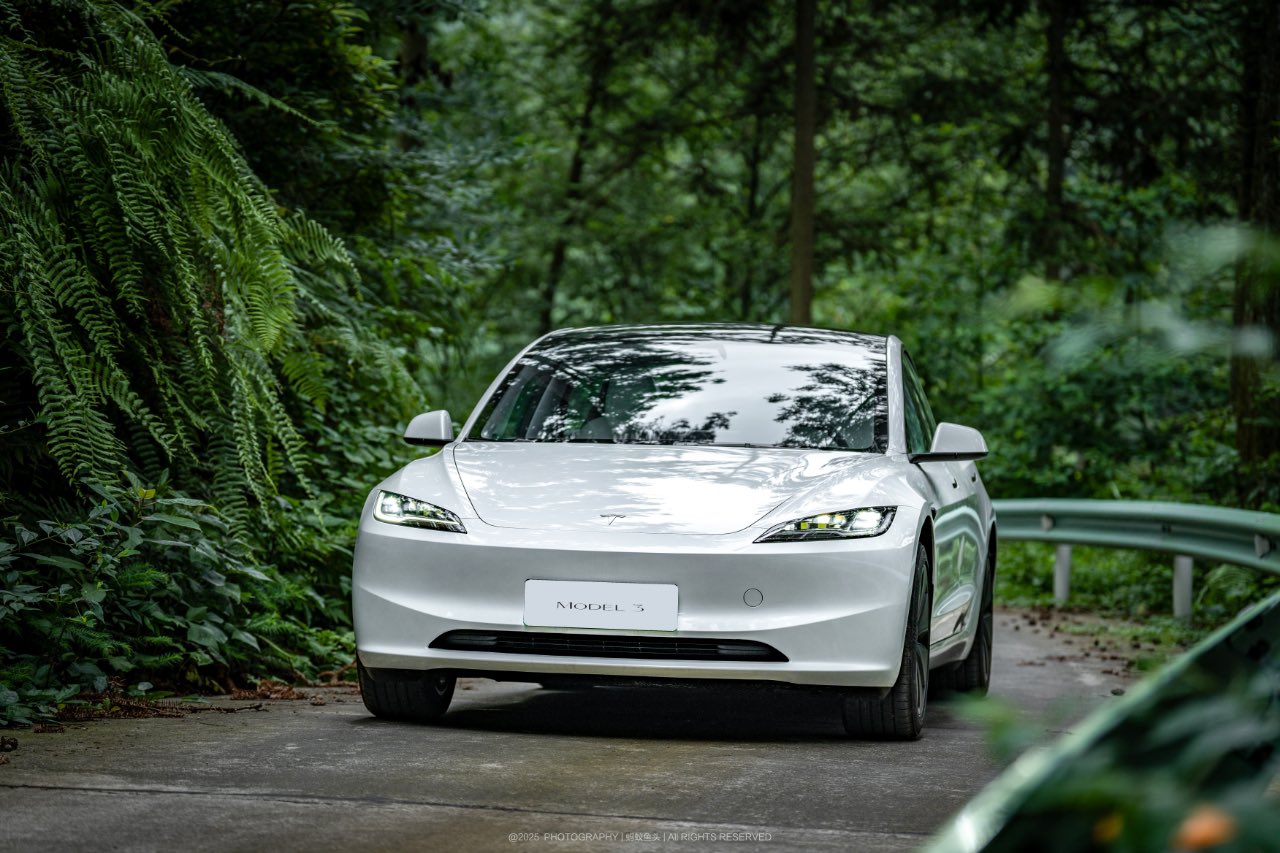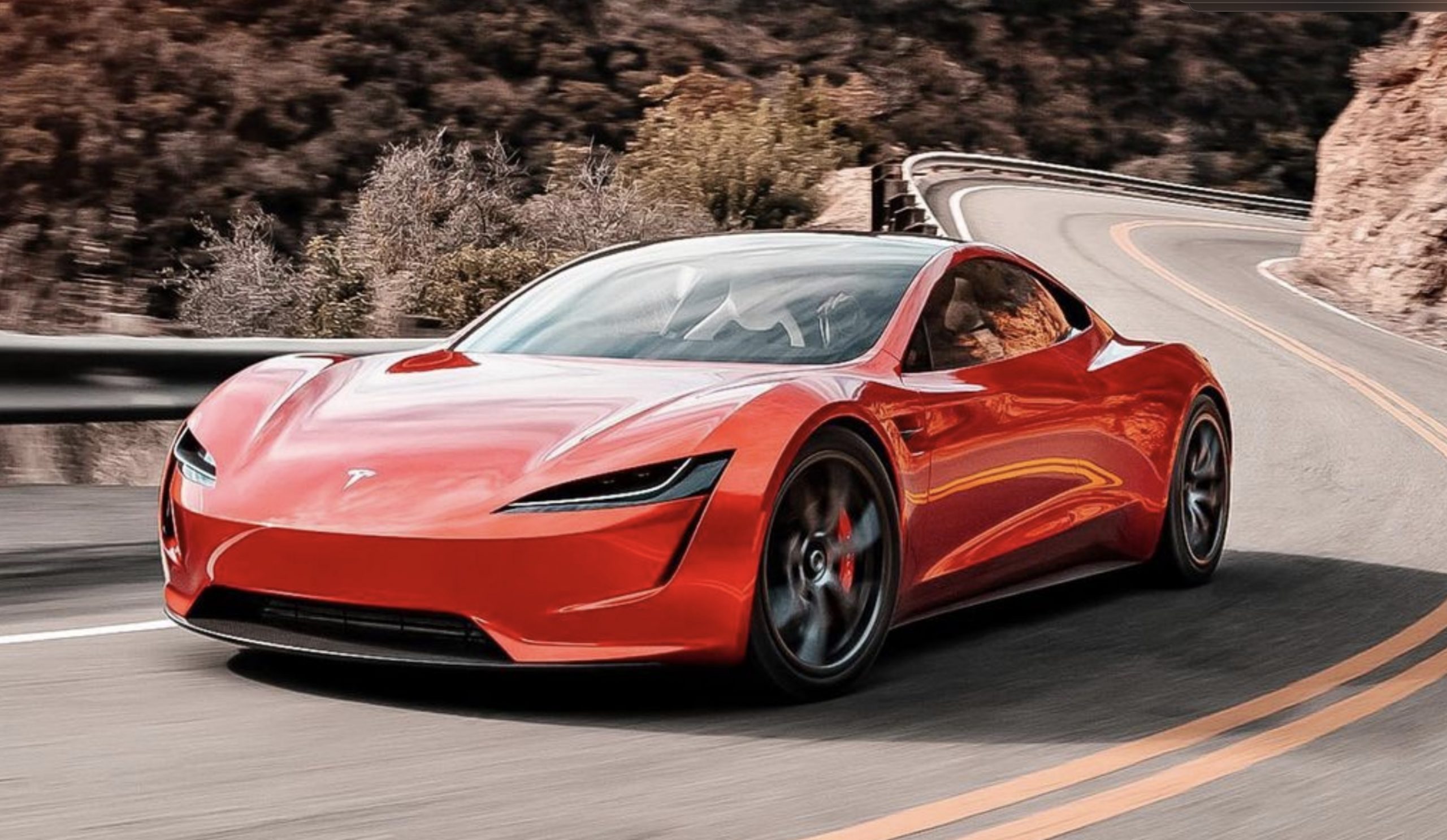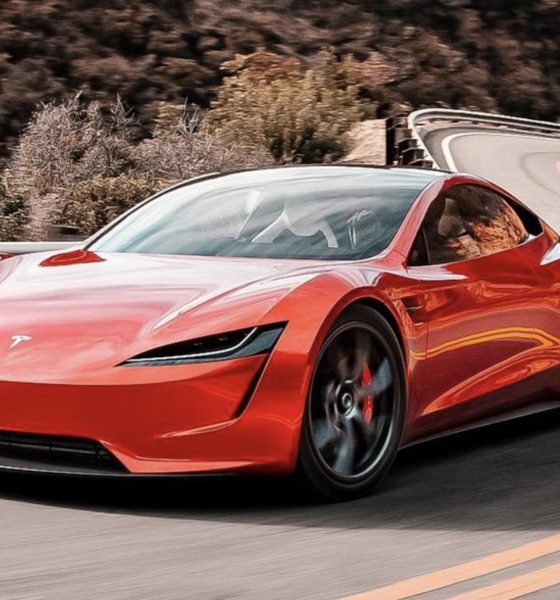Tesla’s Master Plan Part 3 detailed the final portions of how the electric automaker plans to influence and dominate the global market through sustainability. It featured plans for mass production of a new compact model, volume projections for the Cybertruck, and new details on other commercial vehicles, but it was void of the Roadster.
The Tesla Roadster has been one of the company’s crown jewels, but it has been teased for so many years that some fans are wondering if it will ever actually reach production.
In the third iteration of the Master Plan, Tesla broadened its scope for how it can achieve a monumental transition to sustainable powertrains across the entire market, but also how it can achieve a mass production forecast of its entire vehicle lineup.
It featured key contributors to that plan, which include the heavily rumored compact sedan that could be built at its upcoming Gigafactory in Mexico, as well as commercial vehicle applications like a van and two different pack sizes for the Semi.
What it was void of, however, is the Roadster, and the fact that the Master Plan Part 3 was geared toward Tesla’s long-term goals and major contributors to how it can help the world achieve a sustainable future may be the very reason it was not included.
The Roadster is an extremely low-volume vehicle. It costs $250,000, it is apparently going to feature SpaceX cold-gas thrusters for face-melting acceleration, it might have hovering capabilities, but its production has always been derailed by some sort of circumstance beyond Tesla’s control.
Set to make its first deliveries in 2021, the Roadster was put on the back burner, no pun intended, by the COVID-19 pandemic, which basically disrupted nearly every company in the sector in some way. With Tesla looking to survive supply chain constraints and fulfill orders for its vehicles, the Roadster simply was not a priority. Tesla pushed production back to 2022.
Tesla Roadster 2.0 to be better on “basically every metric” than prototype
2022 came and went, and CEO Elon Musk detailed late last year that the vehicle could come this year, as long as Tesla avoided supply chain “mega drama.”
But it seems the Roadster won’t be here this year, either. Tesla will instead focus on Cybertruck production and ramping up its factories for mass electrification, and the Roadster simply does not fit those plans.
Chief Designer for Tesla Franz von Holzhausen said recently that Tesla was in the process of developing the Roadster, but it just won’t make it to the production phases this year:
“We’re developing the car. I think you know we have priorities as a company, and the priorities are mass electrification. And Roadster is not a mass product. So, unfortunately, you know it takes its kind of position, but we are working on it in earnest. And I think the time that we’ve taken had enabled us to really improve on basically every metric that we set out to establish when we first debuted that.”
Last evening’s release of the Master Plan Part 3 revealed a lot of details, but the global fleet only included mass-market vehicles that will contribute to the company’s plan to increase the volume of cars it puts on the road.
Credit: Tesla
The Roadster simply does not fit those plans, so don’t be discouraged if you’re awaiting any updates on its production.
Nevertheless, there is reason to be slightly frustrated with the timeline of the vehicle, especially as it continues to be pushed back for a multitude of reasons. We can only hope the vehicle will be out within the next few years, and even if it is slightly different than what was shown in 2020 and what some customers are expecting.
I’d love to hear from you! If you have any comments, concerns, or questions, please email me at joey@teslarati.com. You can also reach me on Twitter @KlenderJoey, or if you have news tips, you can email us at tips@teslarati.com.

News
Tesla Model Y Standard stuns in new range test, besting its Premium siblings
Tesla’s newer vehicles have continued to meet or exceed their EPA estimates. This is a drastic change, as every 2018-2023 model year Tesla that Edmunds assessed did not meet its range estimates.

The Tesla Model Y Standard stunned in a new range test performed by automotive media outlet Edmunds, besting all of its Premium siblings that are more expensive and more luxurious in terms of features.
Testing showed the Model Y Standard exceeded its EPA-estimated range rating of 321 miles, as Edmunds said it is the “longest-range Model Y that we’ve ever put on our loop.” In the past, some vehicles have come up short in comparison with EPA ranges; for example, the Model Y’s previous generation vehicle had an EPA-estimated range of 330 miles, but only drove 310.
Additionally, the Launch Series Model Y, the first configuration to be built in the “Juniper” program, landed perfectly on the EPA’s range estimates at 327 miles.
It was also more efficient than Premium offerings, as it utilized just 22.8 kWh to go 100 miles. The Launch Series used 26.8 kWh to travel the same distance.
It is tested using Edmunds’ traditional EV range testing procedure, which follows a strict route of 60 percent city and 40 percent highway driving. The average speed throughout the trip is 40 MPH, and the car is required to stay within 5 MPH of all posted speed limits.
Each car is also put in its most efficient drive setting, and the climate is kept on auto at 72 degrees.
“All of this most accurately represents the real-world driving that owners do day to day,” the publication says.
With this procedure, testing is as consistent as it can get. Of course, there are other factors, like temperature and traffic density. However, one thing is important to note: Tesla’s newer vehicles have continued to meet or exceed their EPA estimates. This is a drastic change, as every 2018-2023 model year Tesla that Edmunds assessed did not meet its range estimates.
Tesla Model Y Standard vs. Tesla Model Y Premium
Tesla’s two Model Y levels both offer a great option for whichever fits your budget. However, when you sit in both cars, you will notice distinct differences between them.
The Premium definitely has a more luxurious feel, while the Standard is stripped of many of the more premium features, like Vegan Leather Interior, acoustic-lined glass, and a better sound system.
You can read our full review of the Model Y Standard below:
Tesla Model Y Standard Full Review: Is it worth the lower price?
News
Xpeng CEO: Tesla FSD 14.2 has developed “near-Level 4” performance
While acknowledging that imperfections remain, the Xpeng CEO said FSD’s current iteration significantly surpasses last year’s capabilities.

Xpeng CEO He Xiaopeng has offered fresh praise for Tesla’s Full Self-Driving (FSD) system after revisiting Silicon Valley more than a year after his first hands-on experience.
Following extended test drives of Tesla vehicles running the latest FSD software, He stated that the system has made major strides, reinforcing his view that Tesla’s approach to autonomy is indeed the proper path towards autonomy.
Tesla FSD closing in on Level 4 driving
During his visit, He test-drove a Tesla equipped with FSD V14.2. He also rode in a Tesla Robotaxi. Over roughly five hours of driving across Silicon Valley and San Francisco, He said both vehicles delivered consistent and reassuring performance, a notable improvement from his experience a year earlier.
According to He, Tesla’s FSD has evolved from a smooth Level 2 advanced driver assistance system into what he described as a “near-Level 4” experience in terms of capabilities. While acknowledging that imperfections remain, the Xpeng CEO said FSD’s current iteration significantly surpasses last year’s capabilities. He also reiterated his belief that Tesla’s strategy of using the same autonomous software and hardware architecture across private vehicles and robotaxis is the right long-term approach, allowing users to bypass intermediate autonomy stages and move closer to Level 4 functionality.
He previously tested Tesla’s FSD V12.3.6 and Waymo vehicles in California in mid-2024, noting at the time that Waymo performed better in dense urban environments like San Francisco, while Tesla excelled in Silicon Valley and on highways.
Xpeng’s ambitious autonomy roadmap and internal challenge
The Silicon Valley visit also served as a benchmark for Xpeng’s own autonomy ambitions. He stated that Xpeng is looking to improve its VLA autonomous driving system to match the performance of Tesla’s FSD V14.2 within China by August 30, 2026. Xpeng is poised to release its VLA 2.0 smart driving software next quarter, though He cautioned that the initial version will not be able to match FSD V14.2’s capabilities, as noted in a CNEV Post report.
He also added a personal twist to the goal, publicly challenging Xpeng’s autonomous driving team. If the performance target is met by the 2026 deadline, the CEO stated that he will approve the creation of a Chinese-style cafeteria for Xpeng’s Silicon Valley team. If not, Liu Xianming, head of Xpeng’s autonomous driving unit, has pledged to run naked across the Golden Gate Bridge, He noted.
News
Another Tesla Model 3 variant sold out for January 2026 in China
A look at Tesla China’s order page shows that new Model 3 LR RWD orders now have an estimated delivery date of February 2026.

Another Tesla Model 3 variant in China appears to have sold out for January 2026, with the vehicle now showing an estimated delivery date of February 2026 for new orders. This bodes well for the all-electric sedan, which has maintained notable sales despite more affordable rivals like the Xiaomi SU7 and its crossover sibling, the Model Y.
Model 3 LR RWD joins February 2026 queue
A look at Tesla China’s order page for the all-electric sedan shows that new Model 3 Long Range Rear Wheel Drive orders now have an estimated delivery date of February 2026. Priced from RMB 259,500 ($36,810), the LR RWD sits as the second-lowest-priced trim in Tesla China’s four-variant Model 3 lineup. The move follows a similar delivery timeframe for the Model 3 Performance, which remains the most expensive option for the vehicle, as noted in a CNEV Post report.
The estimated delivery dates of the two remaining Model 3 variants remain unchanged for now. The base RWD version, starting at RMB 235,500, and the LR AWD variant, priced from RMB 285,500, both continue to list estimated delivery times of 4-6 weeks. Tesla China, for its part, has continued to list in-stock Model 3 vehicles and is actively encouraging buyers to select inventory units for delivery before the end of the year.
Model Y delays and policy shifts
Delivery timelines for the Model Y in China are also stretching into 2026. All customized Model Y variants now show February 2026 as their estimated delivery date, except for the entry-level version, which still lists January 2026. Tesla has been urging customers since November to prioritize purchasing inventory vehicles, a push aimed at maximizing year-end deliveries.
Timing matters for Chinese buyers due to upcoming changes in government incentives. China’s new energy vehicle purchase tax exemption will be scaled back in 2026, which means customers who take delivery next year could face higher tax costs compared to those who are able to receive vehicles before the end of the year.
As per data from the China Passenger Car Association, Tesla recorded retail sales of 73,145 vehicles in November, down 0.47% year over year. From January through November, Tesla’s retail sales in China totaled 531,855 units, a 7.37% year-over-year drop.










